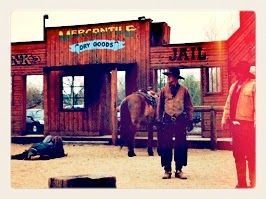He might even find it ironic. Before he revolutionized the cosmetics industry starting in 1932, everyone counted the same measurements that social media experts count today — impressions, shares, leads, and sales. He never did. Rather, he was among the first to say he didn't sell makeup.
"In our factory, we make lipstick," Revson once clarified. "In our advertising, we sell hope."
Never mind that during his tenure Revlon went on to dominate market share, he never sold makeup. What he did instead was win over women by opening their minds to the idea that they could look as good as anyone. He helped turn makeup into a means of self-expression rather than conformity.
Somewhere along the way, after Revson was no longer part of the picture, the once major player in makeup began to lose steam. A few years ago, the company only made $1.4 billion in sales (half of that outside the United States). While that might seem respectable, it's 1/20th of what L'Oreal did.
So what happened? Revlon started selling makeup in such a mass produced fashion that it fell out of favor as the provocative brand it once was. Instead of women feeling like they could be as attractive as Revlon celebrities, they felt forced to conform to the standard set by those celebrities.
It's bad business, but it happens to brands all the time. Brands lose their way in the pursuit of sales over vision. And once they lose their way, it's hard to get it back (no matter how hard they try).
How to make the Revson vision relevant today in content marketing.
I once knew an advertising principal that prided himself on "not being in the advertising business but rather being in the check cashing business." He liked to cash checks. The quip sometimes lured sales-minded businesses in for the short term, but only the short term. It's hard to relate to people when they are always looking at your wallet much the same way it is hard to read sales-driven content.
What people want out of advertising agencies isn't a tax write off. Most of them want to grow their business by opening new markets, increasing market share, expanding distribution, etc. But what happens all too often is they get sidetracked because someone sells them on the ideal of making themselves (and their shareholders) rich in the short term by lowering costs and increasing sales.
Sure, the method works for some companies but not all them. When people want to look and feel their best, they don't necessarily think to search for "cheap lipstick" and then sort through reams of marketing content and purchased reviews. They search and look for something different. And once they find whatever that something might be, they might decide lipstick is part of the equation.
 In other words, to be successful in content marketing today, you have to think beyond a dozen celebrity endorsements, a thousand posts about cosmetics, or a hundred different white papers on lipstick. What you need to ask yourself is how your organization can make a psychological connection to the right person (as opposed to as many people as possible) at the right time.
In other words, to be successful in content marketing today, you have to think beyond a dozen celebrity endorsements, a thousand posts about cosmetics, or a hundred different white papers on lipstick. What you need to ask yourself is how your organization can make a psychological connection to the right person (as opposed to as many people as possible) at the right time.If Revson were alive today, he might support content marketing designed to add value to the lives of his customers but I doubt he would sell lipstick. It's very likely he would still sell hope but on a different canvas. Maybe your organization would be better off taking a page from this playbook too.
Instead of trying to move the sales needle, recognize that the best form of persuasion isn't built upon what you have to sell but what people perceive they need. And if you really listen to them, you likely discover that they only need lipstick some of the time while they need hope (or whatever might correlate to your product) almost all of the time.



























